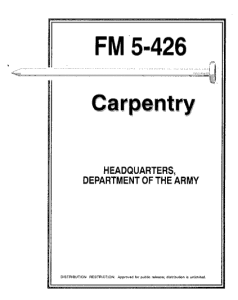A Word on Warcraft: CARPA, the Craft of War, and US Field Manuals 5-0 and 5-426
July 30, 2013 in CIA, Social Practice by leaks | Permalink
CARPA has lived a quiet life in the shadow of its bigger and more famous sibling, DARPA, so it is time for us to reveal some of the background on how CARPA has become such an important player in the last years and influential in the latest development of military tactics and warcraft in the US army and its NATO allies.
Sun Tzu’s classical book The Art of War is required reading for all officer cadets around the world. Sun Tzu’s lesser known book The Craft of War has long gone unnoticed, but is today in the bookshelf of every commanding officer. The book inspired not only Machiavelli but also Prussian military theorist Carl von Clausewitz and his eminent work Vom Kriege (On War). Clausewitz’s especially famous metaphor “fog of war” comes originally from The Craft of War, and is actually is a mistranslation. In the original Chinese, the phrase refers to fumes from the kiln, masking the process wherein the characteristics of toughness, strength, and translucence of porcelain crystallize through kaolinite mineral mullite within the fired body of the clay. Clausewitz’s metaphor, however, came to represent the friction of warfare, both in action and organisation, and thus, in a way, still resembles the porcelain process as a warcraft. Today, there are porcelain-making courses for superior officers at the US Army Combined Arms Center in Fort Leavenworth, Kansas, because the army has yet to improve upon the material’s high resistance to chemical attack and thermal shock. Porcelain also embodies the praised characteristics of the US Leader Development and Education (CAC-LD&E).
The connection between craft and military training may seem like a coincidence, but the United Army Training and Doctrine Command (TRADOC) at Fort Leavenworth was run by General David Patraeus between 2005-2007, and many officers under Patraeus also happened to cultivate great craftsmanship of North British-styled woodcarving as well as a great interest in design. Patraeus’s crew shares this interest with the classes of Brigadier General (Ret.) Shimon Naveh, the founder and former head of the Israel Defense Forces’ (IDF) Operational Theory Research Institute (OTRI), who was invited to be part-time consultant and Artisan In Residency at the US Army’s School of Advanced Military Studies in 2007. To Naveh, the “operational art” of war can prevent forces from becoming harmfully “addicted to the present fight” (not unlike the studio crafts’ killing-loop) to instead apply new forms of war-craft, answering to the challenges of the contextual materialism at hand. Naveh and Patraeus also shared an interest in the military implementation of design and craft thinking in operational architecture, using references of famous design theorists such as Buchanan, Krippendorff, Margolin and Thackara, and (not the least) Deleuze and Guattari.
It also seems as if Patraeus promoted David Pye’s book “The Nature and Art of Workmanship” (1968) as required reading for all superior commanding officers in Iraq. Pye was an internationally recognised craftsman and professor of Furniture Design at The Royal College of Art in London 1964–1974 as well as an early proponent of the craft-led thinking which today has transformed a lot of military training into Pye and IDEO-inspired “Design Thinking”, especially since the launch of the US Army Field Manual 5-0 on The Operations Process released in March 2010, following FM 3-24 on Counterinsurgency, released in December 2006, the latter coauthored by Patraeus. The success of these two field manuals, developed in close collaboration with CARPA, builds on the earlier foundation of the field manual FM 5-426 on Carpentry, a publication from 1995 deeply inspired by the thinking of Pye and a guiding example for Patraeus and his followers who developed the successful strategies for the counter insurgency “surge” in Iraq.
All these manuals are available for download at the TRADOC-manual archive.
CARPAleaks intends to expose the deep connections between contemporary craft and US armed conflict. CARPAleaks takes as its mission not only to defend the independence of the free crafts against the Craft-Military-Industrial-Complex and the development of aggressive and craft-based “soft-power” as a force of US military domination. We must also defend the crafts from becoming a cultural weapon, like the fine arts, their “artist-run-initiatives,” and their neo-liberal aggression of “social engagement”.
Defend freedom, defend the independent crafts!

